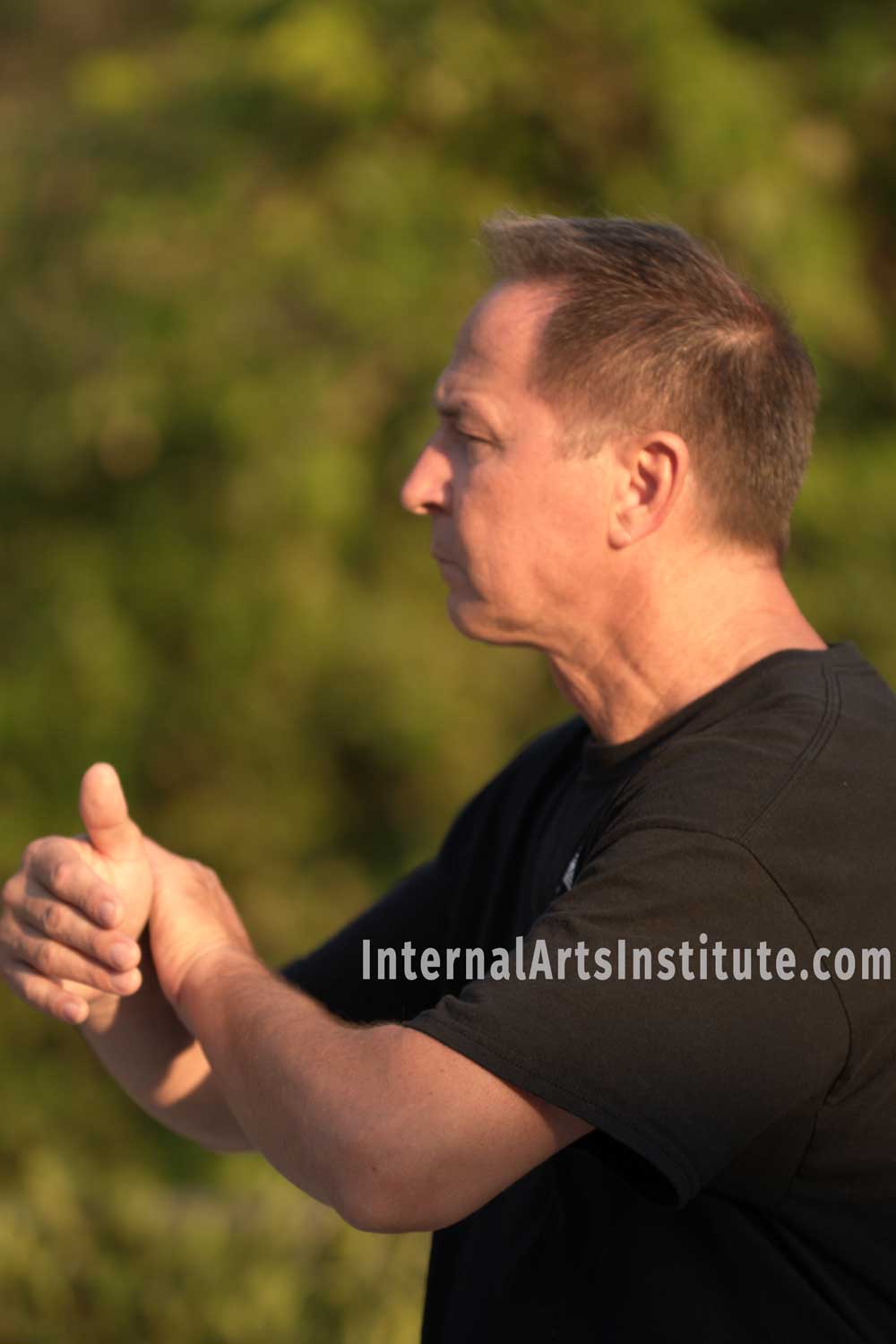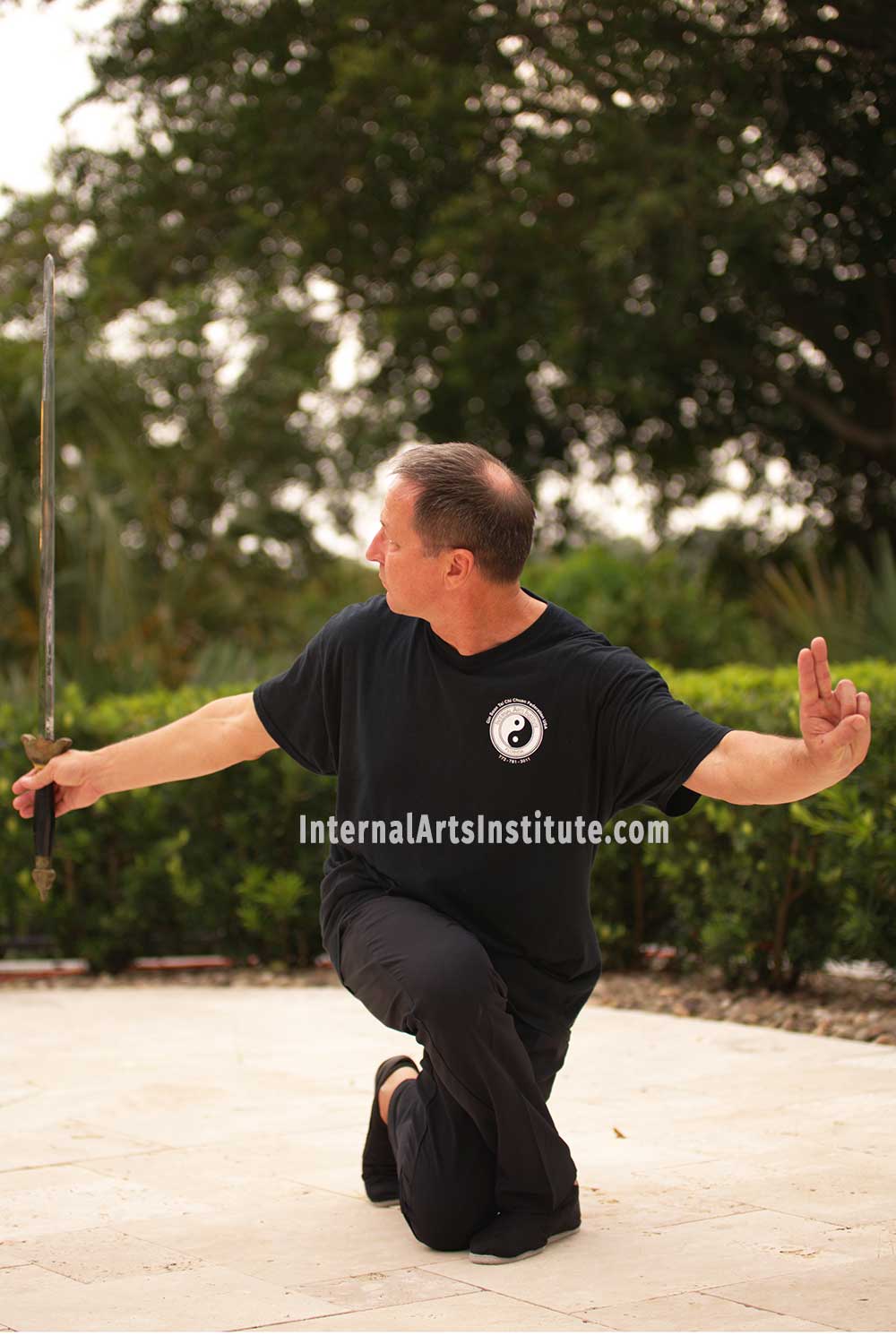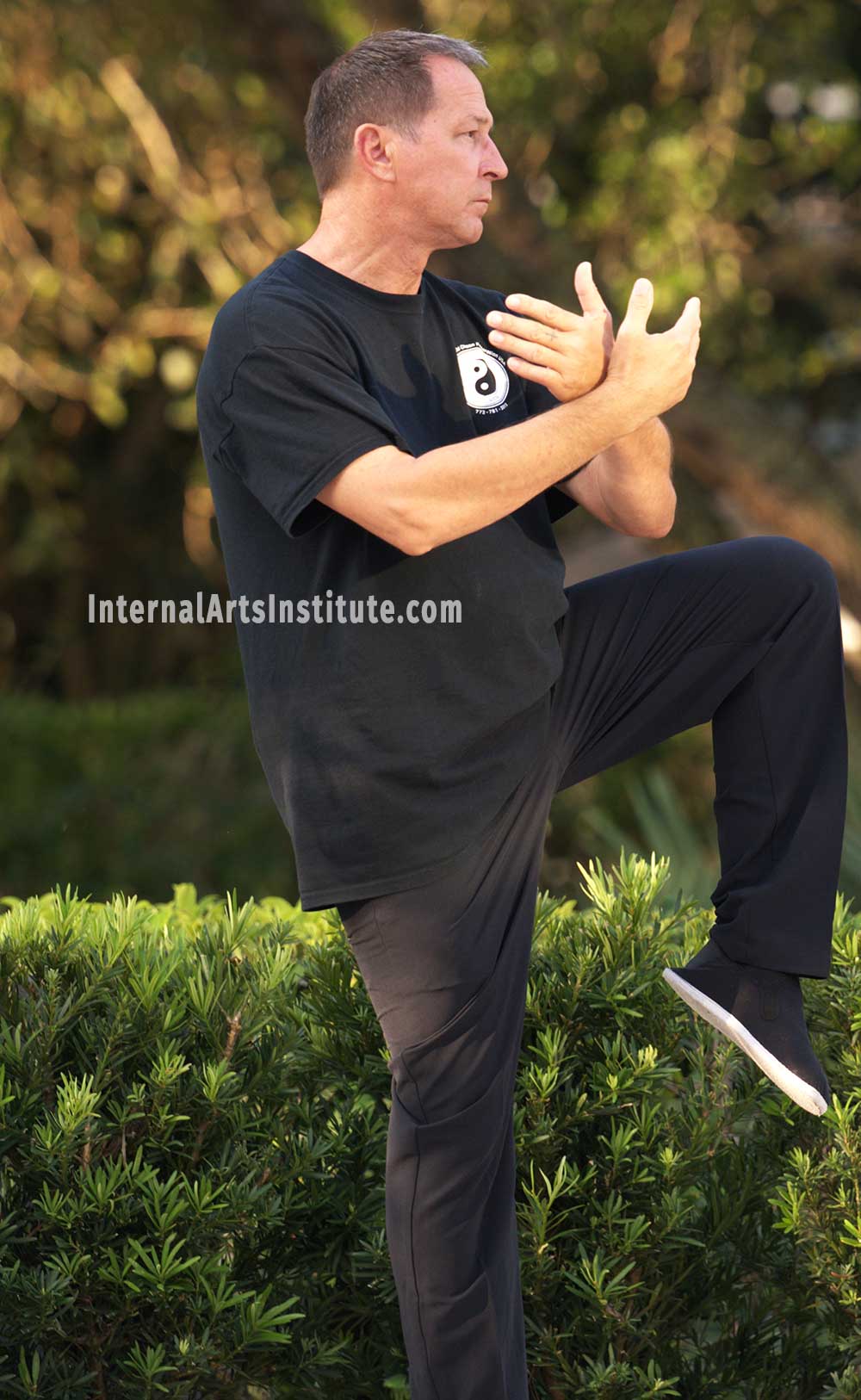Yang Family Tai Chi Chuan Curriculum @ Internal Arts Institute
Tai Chi and Qigong Classes taught in Stuart, Florida
Sifu Dimitri is one of a rare, select group of practitioners sanctioned to teach the following Yeung (Yang) family forms and Qigong as taught by Master Vincent Chu and Grandmaster Gin Soon Chu, one of the disciples of Grandmaster Yang Sau-Chung, firstborn and heir of the legendary Yang Cheng-Fu. In-person classes are available in private or group lessons. Apply here.
Click here to sign up for our ONLINE TAI CHI COURSE, Returning Tai Chi Part 1.

Solo Tai Chi Chuan Forms: Small Frame, Medium Frame, Large Frame
The solo form is distinctive to Chinese martial arts. Generally, a form can be done alone, with a partner, or with one (or more) weapons on hand. Each movement is created and executed based on the martial art's offensive and defensive meanings. The development of a solo form is the result of many generations of practice and training experiences. A good solo form has many effective martial art techniques, applications, and variations as well as tactics. Therefore, it is kept secret and not revealed to the public. There are some solo postures where the emphasis is on strong and powerful techniques, and there are others emphasized on soft and yielding techniques. Dimitri teaches several versions of the solo form; the 108 Long Form, The Large Frame, and the Medium Frame.

Returning Tai Chi
For the last several years, Master Vincent Chu has been working with Master Ou to create a new form known as "Pangu Tai Chi," also known as "Returning Tai Chi Chuan." Returning Tai Chi focuses on martial arts fundamentals such as agility, balance, coordination, and opening the body's joints by stretching the ligaments, tendons, and muscle groups. This new form has two additional unique features.
First, Pangu Tai Chi harnesses the qi of the universe in order for it to improve the body's physiological condition, including the immune system; and, second, contains an emphasis on exercising the lower body while not neglecting the upper torso to improve blood circulation, thus making it easier for the blood to return to the heart.
Pangu Tai Chi exercises both sides of the body equally and can be performed in a very limited space. The form is divided into three parts, each about 7-8 minutes in length, and can be modified to beginner, intermediate, and advanced levels.

Push Hands
The basis of Push Hands exercises is the Solo Form. Push Hands exercises are the next step from the Solo Form. The two are interrelated. One should apply the experiences in Push Hands exercises to the Solo Form and vice versa so one's Tai Chi Chuan will improve. When we practice only the Solo Form, not the Push Hands exercises, the chi which gathers in the practice of the Solo Form will not clear inside the body. If someone practices only Push Hand exercises and not the Solo Form, the chi will not significantly increase. In Yang Family Tai Chi Chuan, the emphasis of the Push Hands exercises is on the techniques of sticking, adhering, following and connecting, giving up oneself and following the opponent, borrowing power from the opponent. In this exercise, we intend to direct the chi so it can develop ward off power.
Dynamic Push Hands
Push hands is a method employed by two people to work on various concepts and principles from martial arts to better oneself and develop skill for combat. Therefore, it is a training method to bridge the gap between bare hands form and free sparring. In Tai Chi Chuan there are several push hands exercises for practitioners to work on to improve the coordination, mobilization, understanding and application of the 13 principles or techniques (ward off, rollback, press, push, split, pull down, elbow strike, shoulder strike, look to the left, look to the right, advance step, retreat step, and center equilibrium) in confrontation situations.
Four-Corner Pulling
The four corners and four directions is an exercise developed to practice all eight hand techniques together in coordination with the foot movements.
Staff
The staff is the original long weapon for all long weapons among Chinese martial art weaponry. One can trace its origin back to pre-historical times when people used tree branches or trees to defend against beasts and for hunting. In the last several decades, experienced Tai Chi Chuan practitioners have begun choreographed staff form based on their experiences. Staff is a weapon shorter than a spear and longer than a sword and broadsword.

Sword Form: Yang Family Style Tai Chi Chuan
For its gracefulness in motion, Tai Chi Sword is one of the most popular weapons in the Tai Chi Chuan System. It follows the same principles and concepts as Tai Chi Chuan's solo form. Although it is similar in many ways, there are obvious differences between Tai Chi Sword and Tai Chi Chuan's solo form. People often describe the sword technique and characteristics as "Flying phoenix or swimming dragon," "sword and body in one unity," and say that "sword is based on nimbleness and flexibility, not on power."

Broad Sword - also known as Knife
Tai Chi Broadsword is one of the short weapons in the Tai Chi Chuan system. It shares the same concepts and principles as Tai Chi Chuan in practice. Tai Chi Chuan practice emphasizes the concepts of slowness, lightness, relaxation, and calm. The use of intent and not physical force. The sinking of chi down to the dantien, concentration, and the harmonization of the internal and external.
Thirteen Technique Spear Form
Tai Chi Big Spear is also known as Tai Chi Staff and Tai Chi 13 Spear Set. It is a 10-foot long weapon included in the Tai Chi Chuan system's weapon armory. It is made from a springy wood known as "white wax wood." This weapon is usually reserved for advanced training because it requires more power and body coordination from the practitioner in order to execute its movements correctly. Tai Chi Big Spear is not common and most Tai Chi Chuan practitioners today do not know it. Tai Chi Big Spear has 13 techniques that include Four Adhesion Techniques, Four Free Techniques, Four Application Techniques, and One Coiling Technique.

Tai Chi Cheung Chuan (Long Form)
Tai Chi Chung Chuan is an advanced form in the Tai Chi Chuan system. It is considered as such based on its value, objective, and function in the martial art perspective. It shares similar philosophy as in Tai Chi Chuan. In the Tai Chi Chung Chuan, the obvious Yin/Yang philosophy is interpreting as fast and slow, and hard and soft movements. When it is slow, the softness is expressing or it is interpreting the concept of the circle. It enables circulation to carry out the qi and nutrients throughout the body. When it is fast, it is the function to deliver power. Therefore, the Tai Chi Chuan Classic said, "First works on the soft component. Later, works on the hard component."
Two Man Sparring Set (A/B)
2-Person Sparring Set is an advanced training beginning after learning the Solo Form and Push Hands Exercises. It teaches Tai Chi Chuan's combat skills. The 2-Person Sparring Set is pre-arranged. It is the best method to train the eyes, hands, feet and body in a combat situation. When one is in combat, it is the situation to compete for survival, martial skill, and physical endurance. To be successful, one must have mobile feet, a nimble body, and a quick hand so all strikes will be powerful and correctly executed. Therefore, 2-Person Sparring Set is an introductory course for Tai Chi Chuan's martial application, training necessary for students who wanted to understand Tai Chi Chuan's martial technique and application.
Power Development Training
Generating internal power is guarded, secret information in the history of martial arts. It is the key training technique to determine the quality and survival of style and system. Every style has one or more techniques on how to generate internal power. Because it is so classified, this technique is usually transmitted orally, without writing down, to prevent outside access. Therefore, the students selected to inherit this information are those considered the best and most trustworthy by their masters. To understand how this internal power develops in Tai Chi Chuan, one must first understand human physiology. When all the muscles of the body act together, we call this centralized movement, for it involves the whole body. The power generated from this unified movement is called internal power. This internal power is so potent that people compare it to the power of ocean waves crashing to the shore or losing control of a car on ice. There are many styles of Chinese martial arts, each with its own method of generating power.
Tai Chi Chuan Qigong
Qigong is a mind and body exercise that emphasizes the function and application of chi. They utilize chi to improve the practitioner's physical strength and moral character, purify the mind and temper, cure disease, and achieve longevity and physical health by clearing the meridians and channels and improving the physiological functions of the organs as well as the nervous and circulatory systems. Because Tai Chi Chuan and Qigong are two disciplines that share many common benefits, many people assume that they are the same; and there are others who think the two are not related. The different opinions have created controversy among practitioners of all levels. Both can improve the practitioner's health in that they clear and enhance the channels' function to better and efficiently transport the chi. Today, there are thousands of qigong techniques and five major family styles of Tai Chi Chuan. The objectives for many practitioners are to clear the meridians to balance the body's chi and blood and Yin and Yang, relax the internal organs, and lubricate the ligaments, tendons, and joints to achieve maximum health.
Pan Gu Mystical Qigong or Pangu Shengong
Qigong is one of the oldest healing systems in the world and is a highly effective method of energy cultivation that improves health, well-being, and vitality. This tradition is based on the cyclical flow of vital energy called Qi, and the map flows through our bodies along pathways called meridians. When our Qi is strong and flowing, we experience health. If Qi is blocked, then illness and pain can occur. There are two forms, non-moving and dynamic. Moving, dynamic qigong exercises strengthen the muscles, bones, and joints; and enhance our internal physiological functions. Static, non-moving qigong exercises calm the mind & enhance nervous system function.
Advanced Training
Taught on an individual basis.

